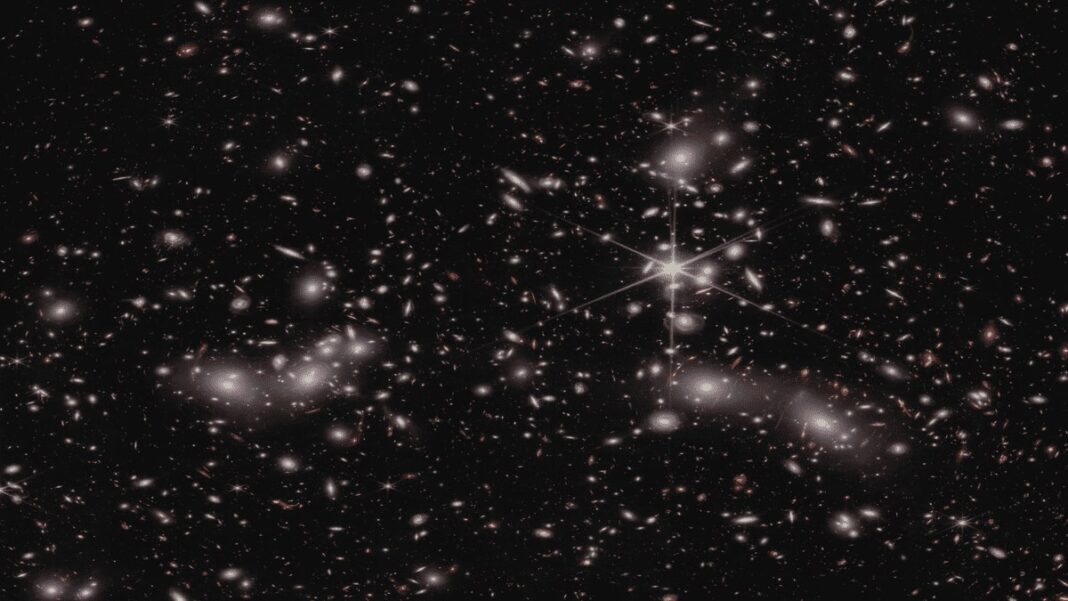UNITED STATES: The newest deep-field picture taken by NASA’s James Webb Space Telescope was unveiled by astronomers. It draws attention to previously unseen characteristics in the brilliant, large region of space known as Pandora’s Cluster (Abell 2744).
In Webb’s vision, three galaxy clusters merged to form mega clusters. The combined mass of the galaxy clusters produces a strong gravitational lens, a natural magnification effect of gravity, which enables observation of much more distant galaxies in the early universe by utilising the cluster as a magnifying glass, according to a NASA press release.
While NASA’s Hubble Space Telescope has thoroughly studied the centre core of Pandora, telescope astronomers want to strike a balance between breadth and depth that will pave the way for new research in the evolution of galaxies and cosmology.
According to astronomer Rachel Bezanson from the University of Pittsburgh in Pennsylvania, “I believe there is a natural connection between the tale of Pandora, which is about human curiosity and discoveries that separate the past from the future, and the new cosmos Webb is opening up, including this deep-field image of Pandora’s Cluster.”
Bezanson continued, “When the first images of Pandora’s Cluster from Webb arrived, the team admitted that they were honestly a little in awe.”
“I found myself getting lost in the image since there was so much detail in the foreground cluster and so many distant lensed galaxies. We were pleasantly surprised by Webb, which was wonderful,” Bezanson concluded.
The galaxy cluster “lens” is so large it warps the very fabric of space, causing light from distant galaxies to follow the curved path as it passes through the warped space.
During exposures spanning 4-6 hours and around 30 hours of observation, the team used Webb’s Near-Infrared Camera (NIRCam) to photograph the cluster.
Also Read: When SpaceX Took the Wheel with Historic Tesla Roadster Launch



